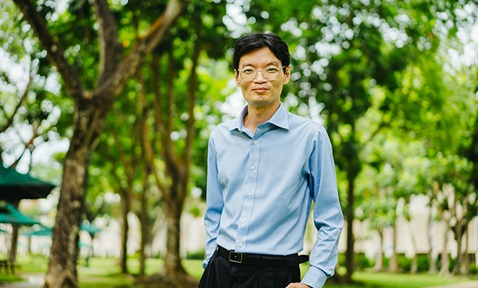Commentary: Disciplinary measures like detention and suspension aren’t enough to solve school bullying
SINGAPORE: Recent viral bullying incidents and subsequent parliamentary discussions have brought school disciplinary and rehabilitation measures into the spotlight.
Education Minister Chan Chun Sing’s emphasis on rehabilitating bullies rather than solely punishing them is a progressive step. However, the continued use of traditional measures such as detention, suspension and even caning raises questions about their effectiveness in correcting bullying behaviour.
Bullying is any form of behaviour that is carried out with the intention to harm, is repetitive, and where there exists a power difference between the bully and the victim. These acts can be physical, such as hitting or pushing; or verbal when the bully makes hurtful or mean remarks in person or online.
Bullying can also be relational when rumours are spread about the victim that cast them in a negative light, leading them to being isolated from their peer group.
Research has pointed to several reasons for school bullying. Bullies may model aggressive behaviours that are observed at home or in the peer group. They may experience feelings of insecurity that prompt them to use aggression to boost their self-esteem or social status.
Bullies tend to have poor relationships with their parents which prevent them from seeking help when they encounter an issue. There may also be a general lack of empathy where the bully fails to recognise or care about the impact their actions may have on others.
HARSH DISCIPLINE HAS LITTLE INSTRUCTIVE VALUE
Traditionally, detention and suspension are common disciplinary tools schools use to deliver clear, negative consequences to perpetrators and send the message that bullying is not tolerated. Caning is also used as a last resort.
Although such disciplinary measures serve as an immediate response to misconduct, their long-term effectiveness in behaviour correction is limited. Detention may provide a temporary deterrent, but it often fails to address the underlying issues that lead to bullying.
Suspension, on the other hand, can be counterproductive. For some students, being suspended might feel like a reward, offering a break from school rather than a consequence for their actions.
Furthermore, both local and international research shows that the use of harsh discipline has little instructive value. The intended message is often masked by the physical and emotional pain, such that children comply out of fear. By themselves, traditional disciplinary measures may not help students fully understand why and how they should behave prosocially.
NEED FOR A HOLISTIC APPROACH
To effectively rehabilitate bullies, a more holistic approach that combines traditional disciplinary measures with counselling and restorative actions is needed.
Counselling can help students understand the impact of their behaviour, develop empathy, and learn better ways to interact with peers. Often, counselling may provide an inroad to unpacking and correcting the underlying issues that contributed to the bullying behaviours in the first place.
These include addressing aggression that is modelled after in the home or peer context, and supporting the bullies to find socially acceptable ways to get access to resources and peer support. Restorative practices, such as mediated conversations between the bully and the victim, can promote accountability and healing.
Importantly, schools and the community at large should put in place strong preventive programmes to reduce the likelihood of bullying. These include existing education efforts through the Character and Citizenship Education (CCE) curriculum.
Workshops conducted by social service agencies such as the Singapore Children’s Society may reinforce students’ core competencies, such as empathy, social and emotional skills. Students can also learn how to support peers who are being bullied.
Schools may also encourage more students to be upstanders – to report or stop bullying behaviour when they witness it. Collectively, these efforts help to cultivate a culture of care and support in the school context.
SHARED RESPONSIBILITY BETWEEN SCHOOLS AND PARENTS
Supporting students, whether they are a bully or a victim, is a shared responsibility between schools and parents. Schools play a crucial role in setting expectations for good conduct and providing a safe learning environment.
However, parents must also be involved in the process. Effective communication between schools and parents is essential to ensure consistency in addressing behavioural issues in school and at home. Parents should be encouraged to reinforce positive behaviour at home and support the school’s efforts in rehabilitation.
Addressing school bullying requires a multifaceted approach that goes beyond traditional disciplinary measures. By integrating counselling and restorative practices, schools can create an environment that not only deters bullying but also fosters personal growth and empathy. Collaboration between schools and parents is key to ensuring that disciplinary and rehabilitation actions lead to meaningful and lasting change.
Cheung Hoi Shan is Assistant Professor in the Psychology and Child & Human Development Department at National Institute of Education, Nanyang Technological University.
Read the original article here.
Source: Channel NewsAsia © Mediacorp Pte Ltd. All rights reserved.



.tmb-listing.jpg?Culture=en&sfvrsn=16b12639_1)
.tmb-listing.jpg?Culture=en&sfvrsn=d641a0cb_1)


